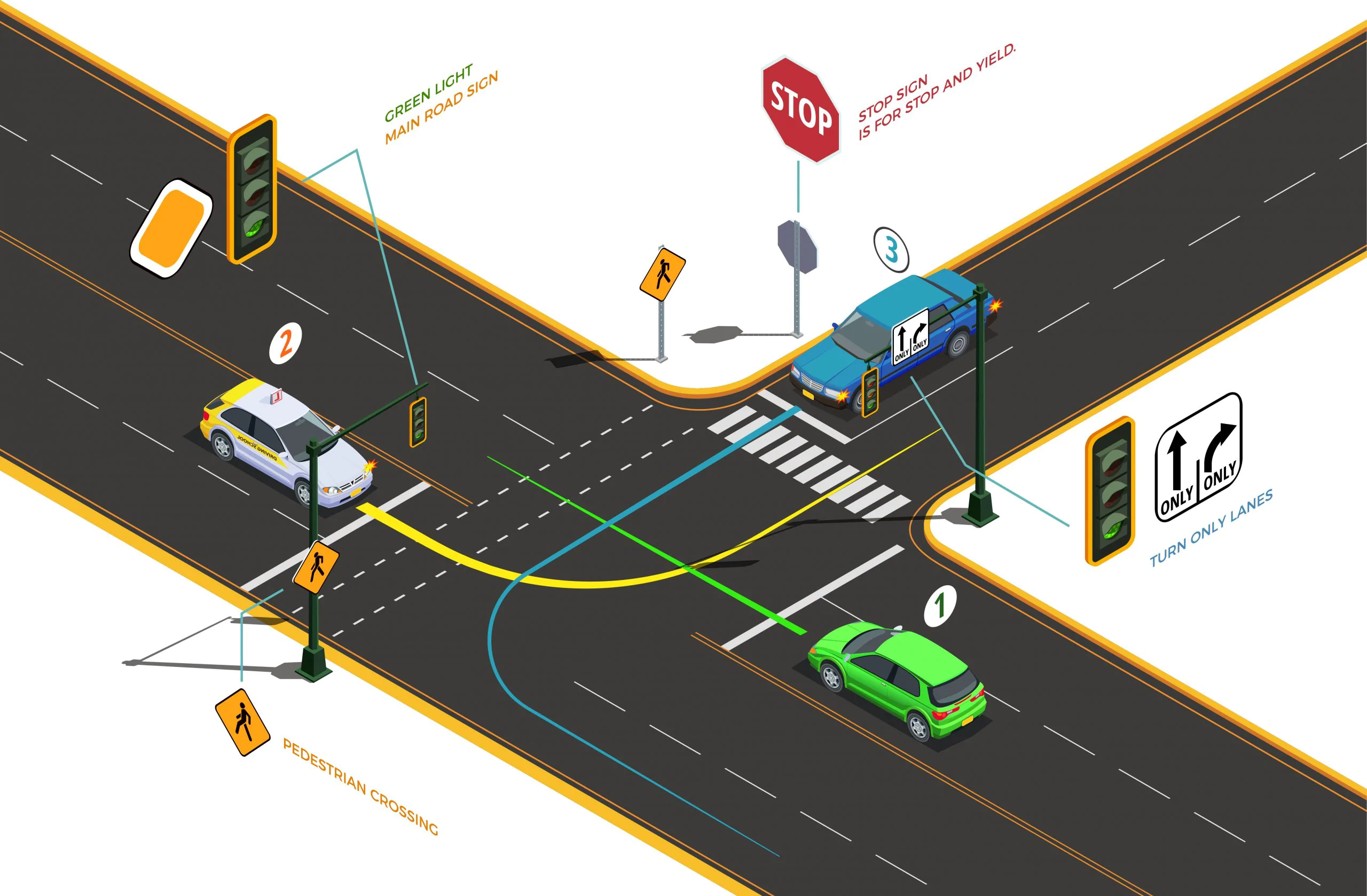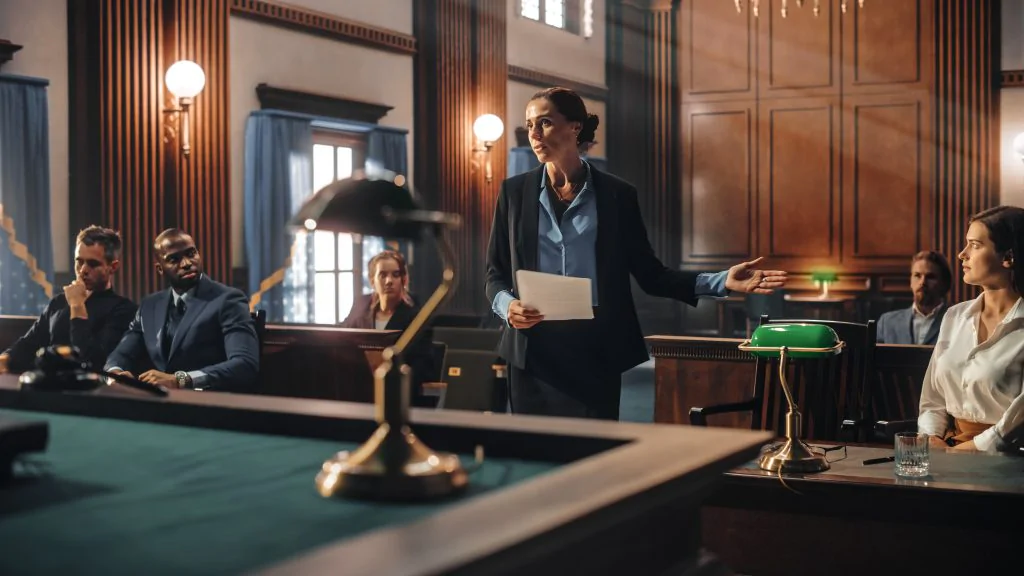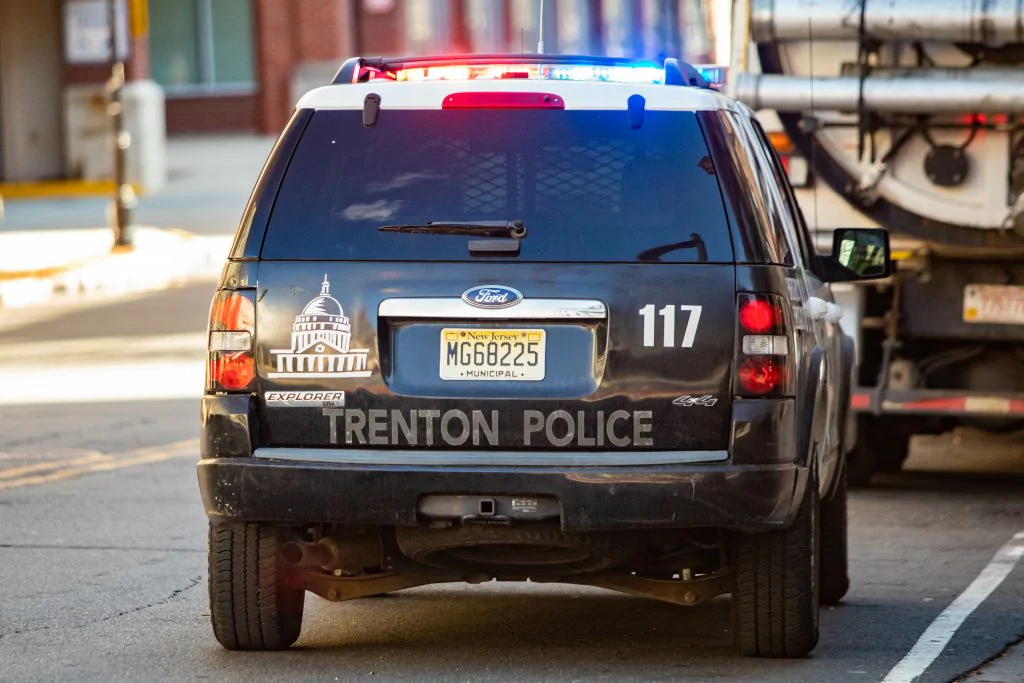There are numerous different types of intersections, each with their own sets of laws that govern who has the proper right of way. 40% of all car accidents in the US occur at intersections, according to statistics from the National Highway Traffic Safety Administration (NHTSA). The same statistics show about 50% of all fatal car accidents occur at an intersection.
Determining who is at fault in a car accident at a given intersection will change depending on who had the legal right of way, as well as the unique variables in play that contributed to the collision.
Traffic Light Intersection Accidents
If a traffic light is red, drivers must bring their cars to a complete stop. Failing to stop for a red light is classified as negligence under the law; all motorists are expected to use reasonable care in the operation of their vehicle and comply with traffic control devices.
Collisions occur at these traffic lights when someone runs through a red light (or if there is a mechanical malfunction with the light, in which case drivers are still expected to understand intersection protocol).
A common concern is determining who has the right of way at a four-way intersection when one driver is turning left, and another on the opposite side plans to turn right into the same lane. Ideally, left turns yield to right turns and cross traffic, with the exception of a green arrow signal.
If a driver makes a right turn on red against a driver turning left on green, she or he can be held liable for violating traffic laws and causing the collision. However, the left-turning driver must yield to a driver who is already in the intersection or cannot stop in time.
Flashing Traffic Light Accidents
Traffic lights can be confusing when they flash red or yellow lights. Intersections often have one direction blinking red, and cross traffic flashing yellow. Flashing red and yellow lights have the same meaning: they both indicate that vehicles must exercise caution and proceed based on their understanding of the rules of the road when a traffic light does not govern when drivers can stop or go.
This discrepancy can be dangerous and result in car accidents causing personal injuries or wrongful death. If a motorist runs through a flashing red or yellow light without yielding to a driver who has the right of way, and in turn causes a car crash, New York courts typically find that motorist negligent in New York.
Disputing Fault in Traffic Light Collisions
In order to recover from an at-fault driver’s insurance, it’s necessary to prove that the other car was at fault. Sometimes determining fault is more clear than not, such as when one vehicle fails to maintain a safe distance, or causes the collision by speeding through a red light.
One of the most common accidents at intersections are rear-end collisions. One of the most frequent mistakes made at intersections that causes rear-end accidents is when one driver tries to beat a yellow or red light without realizing a driver in front of them decided to stop. All drivers have a duty to maintain a clear distance so when the car ahead stops, they can safely stop without colliding from behind.
In most instances, both drivers report to the police that they had the green light. In this case, it’s a common misconception that a plaintiff has to 100% prove the other person guilty without a doubt. To win a settlement in court, it is technically only necessary to prove that the other party is at least 51% responsible for causing the red light accident. Fortunately, there are skilled car accident attorneys who have experience with these types of accidents, and know how to address this challenge.
Legal strategies an attorney might use include:
- Exposing the at-fault driver with traffic video camera evidence. Most traffic cameras only keep recorded video for 20-30 days and therefore must be requested as soon as possible.
- Investigating the accident scene and reconstructing the accident when necessary. Expert analysts are sometimes used to analyze the location of the collision in the intersection, the location of the damage to the vehicles, severity of damage, skid mars and compare it to the stories of each driver in order to determine who is telling the truth.
- Using background checks and credibility when no video or witness is available. To conduct an effective cross examination, criminal and civil background checks are performed on both drivers to establish or degrade credibility.
Stop Sign Intersection Accidents
Unlike traffic lights, stop signs only specify one driving direction and drivers are often unsure of the right of way etiquette. At a four-way intersection controlled by stop signs, drivers must yield to those who were at the intersection first and crossing pedestrians. Drivers turning left are to yield to straight and right turning traffic. Drivers turning right must yield to straight oncoming traffic.
When two cars arrive at an intersection at the same time, the driver making a left turn should yield to the one making a right turn regardless of if there is no signage or traffic light. Left turning drivers must wait and allow right turning or straight driving vehicles to proceed before continuing through the stop sign. Waiting to assess the roadway is one of the reasons why it is essential to come to a complete stop at a stop sign.
Failure to yield the right of way or failing to stop at a stop sign is irresponsible and negligent. When personal injuries occur as a result, the situation usually involves the two parties alleging it was the other who ran the stop sign. It is important to obtain a copy of the police report to identify who the officer deemed responsible for the accident at the scene.
Additional witness statements and photographs of the scene can be used to build a strong claim that proves the other driver is responsible for the accident. Due to the significant issues involved with liability and determining that the other party neglected the stop sign, it’s important to find an attorney that has handled cases like these before.
Uncontrolled Intersection Right-of-Way Accidents
An uncontrolled intersection has no traffic light, stop sign or any other traffic control device. This type of intersection is common for rural and residential areas. Drivers are not required to come to a complete stop at an uncontrolled intersection, which makes it incredibly important to slow down and look out for cross traffic. In this case, approaching from the right does not automatically grant the right of way and does not excuse drivers from slowing down before entering the intersection.
Just as when there are stop signs present, the vehicle that arrives at the intersection first has the right of way. When two drivers approach an intersection at the same time, the driver of the vehicle on the left must give way to the driver of the vehicle on the right. When making a left turn, drivers must yield to all oncoming traffic even if he or she was the first one to enter the intersection.
Determining fault in these types of collisions should be treated the same way as other intersection discrepancies: a police report must be made, witnesses need to be gathered and interviewed, cameras and video need to be reviewed.
Uncontrolled T-Intersection Right of Way
At a T-intersection that is not controlled by a traffic light or traffic signs, the driver on the terminating road must yield to the right of way to cross traffic and pedestrians using a crosswalk. This right of way procedure also applies to when a driver enters a highway from a driveway or private road.
At a four-way uncontrolled intersection, vehicles turning left are supposed to yield to right running vehicles. This rule does not apply to the same situations at T-intersections because the driver who is turning onto the main road must yield to traffic coming from both the left and right.
The Role of Injuries in Determining Fault for Intersection Accidents
As mentioned, determining fault in intersection collisions requires similar investigative protocol no matter what the situation. Overall, fault is determined by figuring out which driver ignored the right of way, or who was careless and reckless in driving.
Drivers who are found to be at fault because were most likely unaware of the proper right-of-way laws (or knew and ignored them), but there are other contributing factors that are common as well:
- Speeding through intersections making it impossible to adequately stop when necessary
- Not signaling with blinkers
- Distracted driving/using cellphones
- Misinterpreting traffic signals
- Improperly maneuvering the vehicle while the road is affected by dangerous weather conditions
Intersection accidents can result in numerous injuries, including TBIs, spinal injuries, broken bones, organ damage, internal bleeding, and death. It’s extremely important to seek medical treatment as soon as possible after a car accident at an intersection, and to keep copies of any medical records pertaining to any resulting injuries. Some injuries may not present themselves right away due to adrenaline and shock. Further, victims should contact an expert attorney to pursue legal action as quickly as possible.
Typically, the more severe a victim’s injury is, the easier it is for a car accident lawyer to prove a victim’s innocence in causing the crash, and the greater the settlement amount awarded for damages.
How Sobo & Sobo Can Help
Traffic signs, signals and pavement markings do not always resolve traffic conflicts. If you are hurt by a driver who did not stop at a stop sign or a red light, you need an attorney who will work as hard as possible to pursue the maximum compensation you deserve. Our attorneys will have a significant impact on the outcome of your case and give you peace of mind as your focus on healing and medical treatment during such a challenging time.
At the Law Offices of Sobo & Sobo, we are dedicated to helping clients recover damages from injuries sustained in intersection accidents. We offer a free initial consultation and don’t expect any payment until winning your case. Call 855-GOT-SOBO or contact online risk-free to start receiving help with the legal process today.




